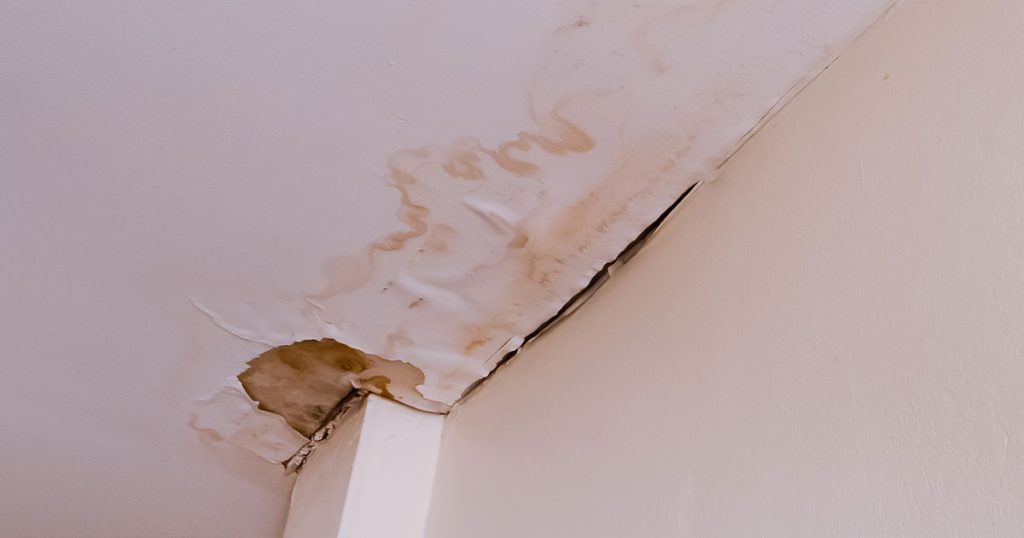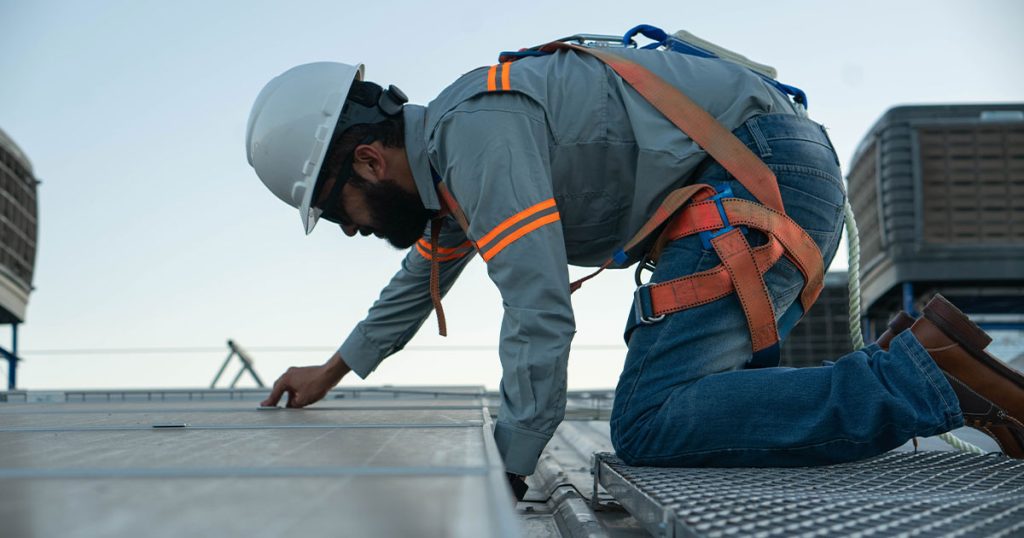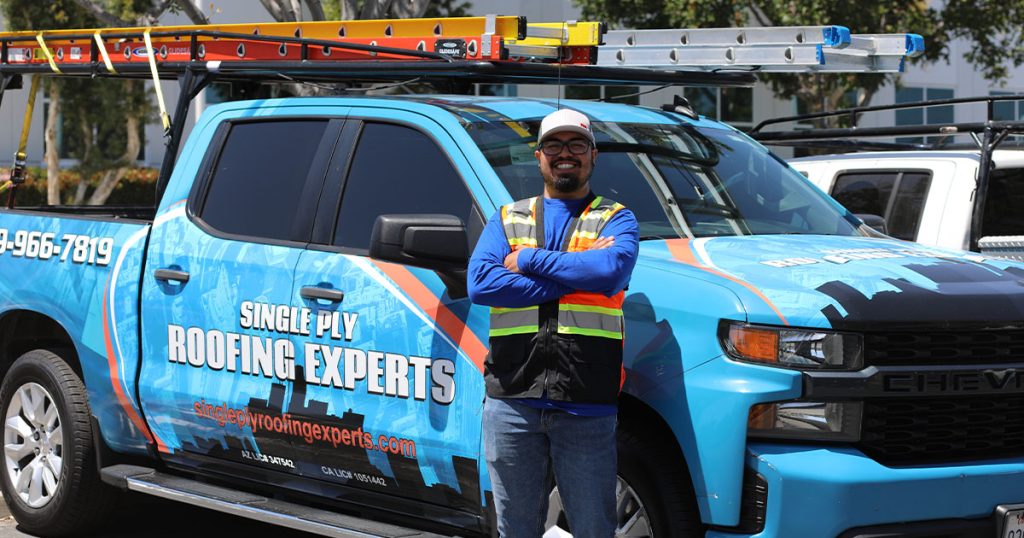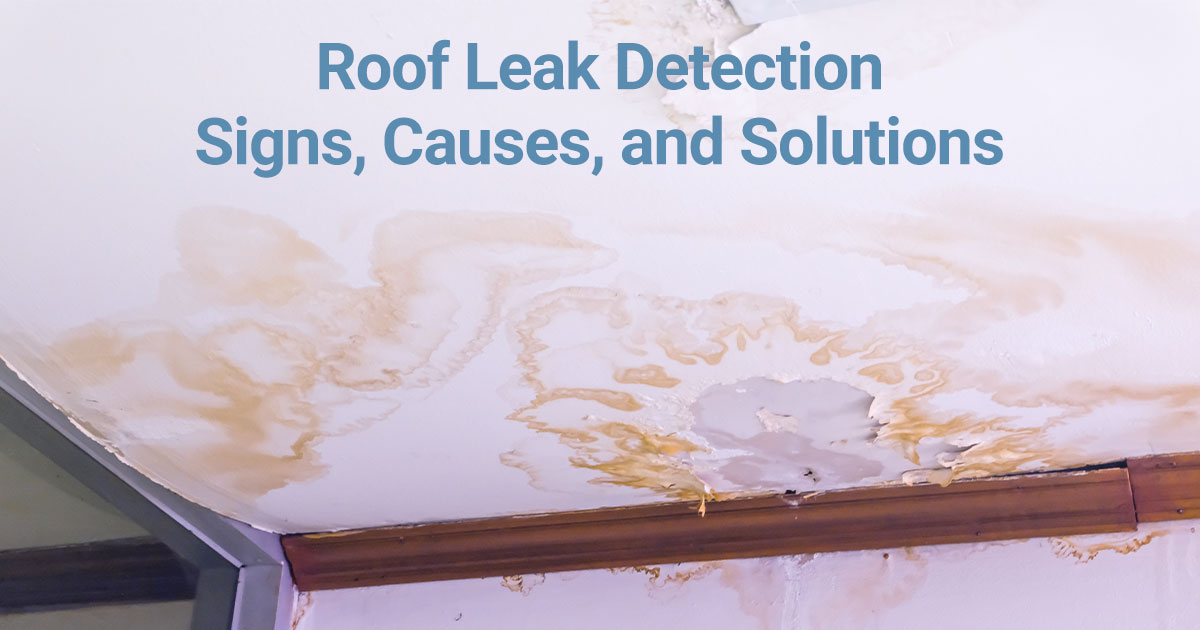You notice a faint yellow stain on your ceiling. At first, it seems harmless. Then the next rainstorm hits, and the stain spreads, the paint bubbles, and a slow drip starts to form. This is how most roof leaks begin.
At Single Ply Roofing Experts, we’ve spent decades diagnosing and fixing leaks across commercial buildings, residential properties, and industrial facilities. Roof leak detection isn’t just about spotting where water comes in. It’s about understanding the hidden paths water travels through your roof structure and stopping it before it causes costly damage.
Early roof leak detection can mean the difference between a quick, affordable repair and thousands of dollars in structural restoration. Let’s walk through how professionals identify leaks, the signs you should never ignore, and the proven solutions that keep your property protected.
What Is Roof Leak Detection?
Roof leak detection is the process of identifying, tracing, and confirming the exact point where water penetrates the roofing system. It’s not as simple as looking up and spotting a drip.
Water can enter through tiny membrane separations, travel along beams or insulation, and show up inside your building several feet away from the actual source. Professional leak detection involves understanding this behavior and using advanced methods to pinpoint the problem precisely.

Common detection techniques include:
- Visual inspections to locate obvious signs like cracks, punctures, or failed flashing.
- Infrared thermography to reveal hidden moisture below the surface.
- Moisture scanning to detect trapped water within layers of roofing.
- Water tracing tests to confirm exact entry points.
Done correctly, roof leak detection provides a clear map of how and where water enters, allowing for targeted, lasting repairs.
Why Early Roof Leak Detection Matters
Many leaks remain invisible for weeks or even months. During that time, water can saturate insulation, promote mold growth, rot wooden structures, and compromise the integrity of ceilings and walls.
We often find that what looks like a small interior stain actually traces back several feet across the roof membrane. By the time that stain becomes visible, significant damage may already be underway.
Early roof leak detection prevents:
- Energy loss from wet insulation.
- Mold contamination and air quality issues.
- Interior ceiling and drywall damage.
- Costly structural repairs caused by prolonged moisture exposure.
The sooner a leak is detected, the simpler and more affordable the repair will be.
Common Signs of a Roof Leak
Homeowners and property managers can often spot early indicators if they know where to look. Some of the most reliable roof leak signs include:
- Water stains or bubbling paint on ceilings: Often the first interior clue that water has found a path inside.
- Damp insulation or musty smells in attics: Indicates hidden moisture accumulating over time.
- Mold or discoloration around vents and skylights: Suggests compromised flashing or sealant failure.
- Cracked or loose flashing: Allows water to bypass membranes and enter vulnerable areas.
- Dripping after heavy rain: A clear signal that water is entering faster than it can evaporate or drain.

Each sign provides valuable clues. For example, bubbling paint typically points to trapped moisture between drywall and vapor barriers, while staining near skylights usually indicates flashing separation. A professional inspection connects these clues to the exact source on the roof surface.
Main Causes of Roof Leaks
Understanding why leaks occur is just as important as finding them. Over years of field experience, we’ve seen the same issues surface again and again.
Aging Roofing Materials
Every roof has a lifespan. Over time, membranes dry out, shrink, crack, or separate. Seams loosen, coatings thin, and protective layers wear down, creating entry points for water. We often see this in older commercial roofs where the membrane has simply reached the end of its service life.
Faulty Flashing or Seals
Flashing protects the most vulnerable parts of a roof, like edges, vents, and skylights. Poor installation or natural wear leads to small gaps that allow water in. Even a tiny gap can let water travel under the membrane and remain undetected for months.
Standing Water on Flat Roofs
Flat and low-slope roofs are prone to ponding when drainage systems are inadequate. Prolonged standing water accelerates membrane breakdown and often leads to leaks directly beneath those pooled areas.
Punctures and Foot Traffic Damage
Maintenance crews walking across roofs without proper walk pads frequently cause punctures. These small tears are often overlooked until leaks appear inside the building.
Poor Drainage Systems
Clogged gutters, blocked drains, or poorly designed scuppers cause water to back up and find its way under the roofing system. This is especially common after heavy storms or in properties with neglected maintenance schedules.
How Professionals Detect Roof Leaks
At Single Ply Roofing Experts, our roof leak detection process follows a proven, meticulous sequence to ensure nothing is missed.
- Initial Visual Inspection
We walk the roof, examining membrane seams, flashing, penetrations, and surface conditions for visible defects. - Infrared or Moisture Scans
Specialized equipment detects hidden moisture pockets beneath the surface. These scans allow us to see what the naked eye can’t. - Water Testing
If necessary, controlled water testing helps trace the exact entry path of leaks. We isolate sections and run water to observe infiltration in real time. - Interior Assessment
We examine attic spaces, insulation, and ceiling cavities to map the leak’s travel path from the roof surface to the interior.

We’ve encountered situations where the visible ceiling drip was located twenty feet away from the actual point of entry. Without systematic detection, these leaks can easily be misdiagnosed and recur after patching.
DIY vs. Professional Roof Leak Detection
While it might be tempting to climb up and look for obvious problems, most leaks aren’t visible to the untrained eye. DIY inspections often miss subtle signs of moisture infiltration or fail to identify hidden damage beneath the membrane.
There are also significant safety risks associated with climbing onto roofs without proper equipment.
Professional inspections bring three critical advantages:
- Precision: Advanced diagnostic tools identify leaks with pinpoint accuracy.
- Experience: Seasoned specialists recognize patterns and issues developed over years of field work.
- Long-Term Results: Properly diagnosed leaks are repaired once, not repeatedly patched.
At Single Ply Roofing Experts, we rely on industry-grade technology combined with decades of practical expertise to detect leaks that visual checks alone can’t find.
Expert Solutions for Roof Leak Repair
Once leaks are detected, effective repair strategies are crucial. Our approach focuses on targeted, lasting solutions that address both the symptom and the cause.
- Membrane Resealing and Coating: Restores the waterproof barrier and protects against UV degradation.
- Flashing Replacement: Resolves recurring edge leaks and prevents water intrusion around penetrations.
- Drainage System Improvement: Ensures proper water flow to eliminate ponding and related seepage.
- Preventive Maintenance Plans: Scheduled inspections and upkeep stop small issues before they escalate.
These methods extend roof life, reduce future maintenance costs, and protect your property against repeated leaks.
Common Mistakes to Avoid
Many costly roof replacements begin as small, avoidable mistakes:
- Ignoring early stains or minor drips.
- Applying caulk, tar, or temporary patches that trap moisture.
- Skipping inspections after severe weather.
- Hiring unlicensed or inexperienced roofers who lack diagnostic expertise.
These oversights often turn what could have been a $200 localized repair into a $5,000 or more roof section replacement.
Pro Tips from Single Ply Roofing Experts
From decades of field experience, here are proven practices that keep leaks from turning into emergencies:
- Schedule a roof inspection after every major storm to catch new damage early.
- Invest in reflective roof coatings to prevent heat-related cracking.
- Keep drains and gutters clean to avoid ponding water.
- Know your roof material type and age, so you can plan maintenance proactively.
These steps, combined with regular professional inspections, create a strong defense against leaks.
FAQs about Roof Leak Detection
What is the most accurate way to detect a roof leak?
The most accurate method combines infrared or moisture scanning with targeted water testing. This approach pinpoints leaks that may be hidden beneath the surface and invisible during visual inspections.
Can roof leaks be fixed without replacing the entire roof?
In most cases, yes. If the roofing system is structurally sound, localized repairs, resealing, or flashing replacement can solve the problem effectively without the need for a full roof replacement.
How often should I have my roof inspected for leaks?
We recommend inspections twice a year, typically in spring and fall. Additional inspections should follow major storms or heavy rainfall to catch damage early.
Does roof leak detection work for flat roofs?
Yes. In fact, flat roof leak detection often relies more heavily on infrared scanning and moisture mapping since water can travel in unpredictable patterns across flat membranes.
What happens if I ignore a small roof leak?
Small leaks rarely stay small. Over time, trapped moisture can lead to insulation decay, mold, rot, and structural weakening. Ignoring early warning signs usually results in more extensive and expensive repairs down the line.
Protect Your Property with Professional Roof Leak Detection
Roof leaks rarely announce themselves loudly. They start quietly, spread invisibly, and can cause significant damage before you notice a single drip. Roof leak detection performed by seasoned professionals ensures problems are caught early, traced accurately, and resolved effectively.
Don’t let a small stain turn into a major structural problem. Contact Single Ply Roofing Experts today for precise, reliable, and affordable roof leak detection you can trust.

